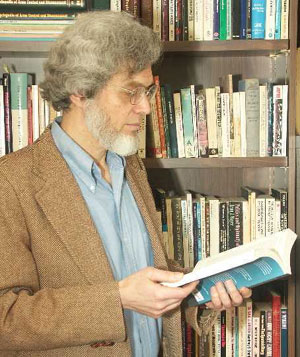Det danske Fredsakademi
Kronologi over fredssagen og international politik 20. januar 2014 / Time Line January 20, 2014
Version 3.519. Januar 2014, 21. Januar 2014
01/20/2014
The Endless Arms Race
By Lawrence S.
Wittner
 It’s heartening to see that an agreement has
been reached to ensure that Iran honors its commitment, made when
it signed the 1970 nuclear Non-Proliferation Treaty (NPT), to forgo
developing nuclear weapons.
It’s heartening to see that an agreement has
been reached to ensure that Iran honors its commitment, made when
it signed the 1970 nuclear Non-Proliferation Treaty (NPT), to forgo
developing nuclear weapons.
But what about the other key part of the NPT, Article VI, which
commits nuclear-armed nations to “cessation of the nuclear
arms race at an early date and to nuclear disarmament,” as
well as to “a treaty on general and complete
disarmament”? Here we find that, 44 years after the NPT went
into force, the United States and other nuclear powers continue to
pursue their nuclear weapons buildups, with no end in sight.
On January 8, 2014, U.S. Defense Secretary Chuck Hagel announced
what Reuters termed “ambitious plans to upgrade [U.S.]
nuclear weapons systems by modernizing weapons and building new
submarines, missiles and bombers to deliver them.” The
Pentagon intends to build a dozen new ballistic missile submarines,
a new fleet of long-range nuclear bombers, and new intercontinental
ballistic missiles. The Congressional Budget Office estimated in
late December that implementing the plans would cost $355 billion
over the next decade, while an analysis by the independent Center
for Nonproliferation Studies reported that this upgrade of U.S.
nuclear forces would cost $1
trillion over the next 30 years. If the higher estimate proves
correct, the submarines alone would cost over $29 billion each.
Of course, the United States already has a massive nuclear weapons
capability -- approximately 7,700 nuclear weapons, with more than enough
explosive power to destroy the world. Together with Russia, it
possesses about 95 percent of the more than 17,000 nuclear weapons
that comprise the global nuclear arsenal.
Nor is the United States the only nation with grand nuclear
ambitions. Although China currently has only about
250 nuclear weapons, including 75 intercontinental ballistic
missiles (ICBMs), it recently flight-tested a hypersonic nuclear
missile delivery vehicle capable of penetrating any existing
defense system. The weapon, dubbed the Wu-14 by U.S. officials, was
detected flying at ten times the speed of sound during a test
flight over China during early January 2014. According to Chinese
scientists, their government had put an “enormous
investment” into the project, with more than a hundred teams
from leading research institutes and universities working on it.
Professor Wang Yuhui, a researcher on hypersonic flight control at
Nanjing University, stated that “many more tests will be
carried out” to solve the remaining technical problems.
“It’s just the beginning.” Ni Lexiong, a
Shanghai-based naval expert, commented approvingly that
“missiles will play a dominant role in warfare, and China has
a very clear idea of what is important.”
Other nations are engaged in this arms race, as well. Russia, the other dominant nuclear power,
seems determined to keep pace with the United States through
modernization of its nuclear forces. The development of new,
updated Russian ICBMs is proceeding rapidly, while new nuclear
submarines are already being produced. Also, the Russian government
has started work on a new strategic bomber, known as the PAK DA,
which reportedly will become operational in 2025. Both Russia and
India are known to be working on their own versions of a hypersonic
nuclear missile carrier. But, thus far, these two nuclear nations
lag behind the United States and China in its development. Israel
is also proceeding with modernization of its nuclear weapons, and
apparently played the key role in scuttling the proposed U.N.
conference on a nuclear weapons-free zone in the Middle East in
2012.
This nuclear weapons buildup certainly contradicts the official
rhetoric. On April 5, 2009, in his first major foreign policy
address, President Barack Obama proclaimed “America’s
commitment to seek the peace and security of a world without
nuclear weapons.” That fall, the UN Security Council --
including Russia, China, Britain, France, and the United States,
all of them nuclear powers -- unanimously passed Resolution 1887, which reiterated the point that the
NPT required the “disarmament of countries currently
possessing nuclear weapons.” But rhetoric, it seems, is one
thing and action quite another.
Thus, although the Iranian government’s willingness to forgo
the development of nuclear weapons is cause for encouragement, the
failure of the nuclear nations to fulfill their own NPT obligations
is appalling. Given these nations’ enhanced preparations for
nuclear war -- a war that would be nothing short of catastrophic --
their evasion of responsibility should be condemned by everyone
seeking a safer, saner world.
|
|
|